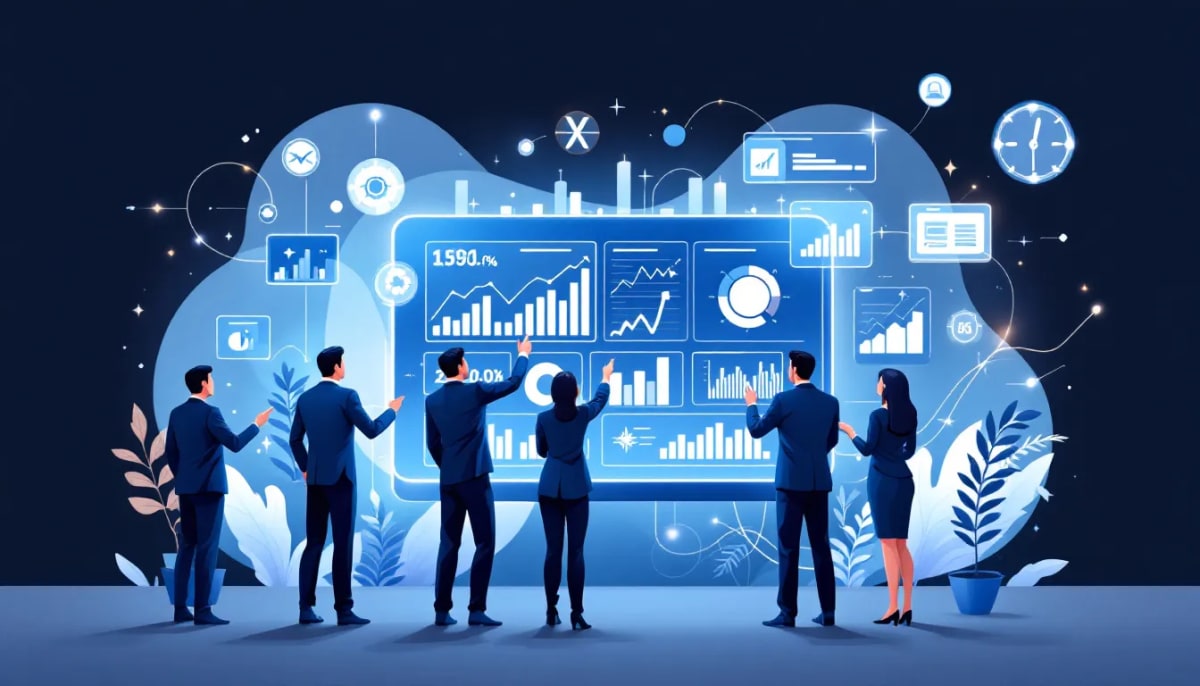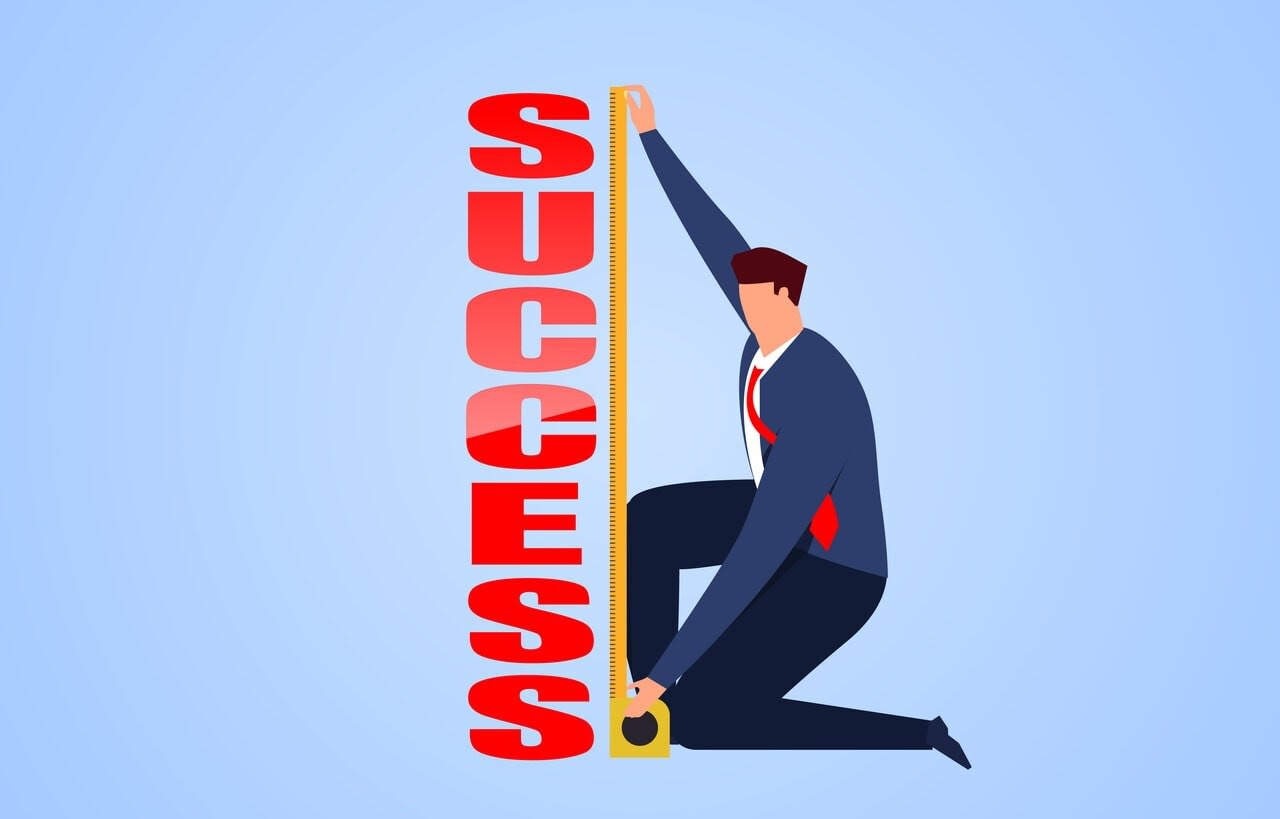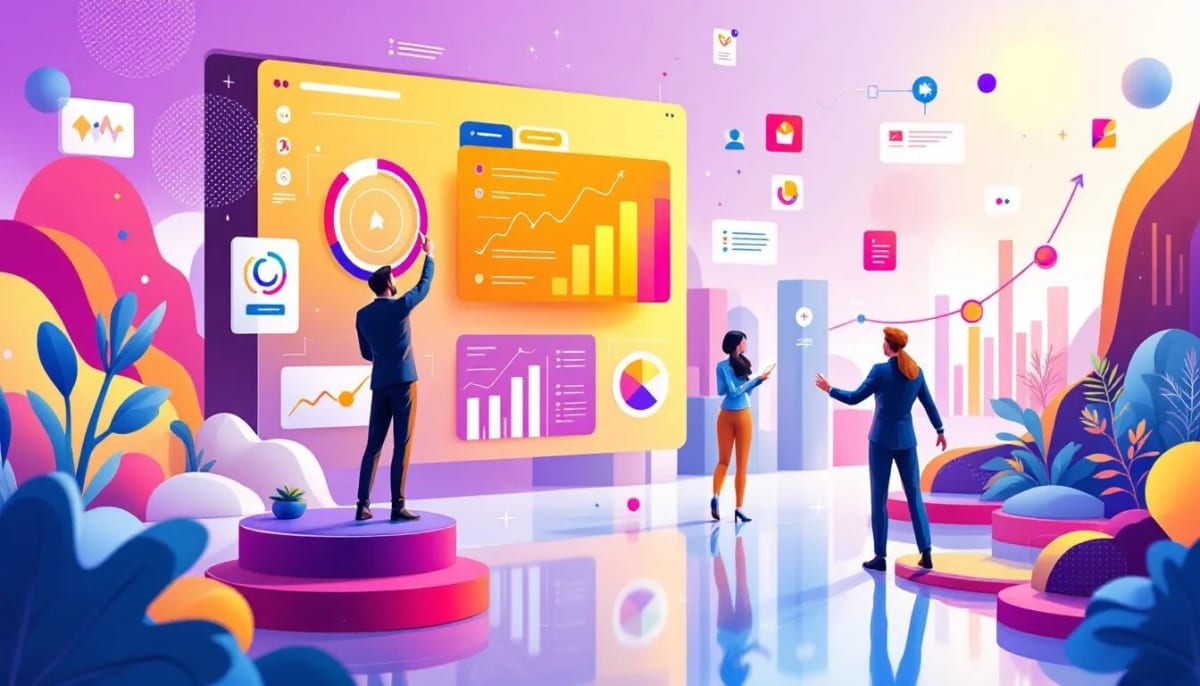What if your sales team had everything they needed, right when they needed it, to close more deals and work smarter? That’s the power of sales enablement. Sales enablement is about giving your team the right tools, content, and support to perform at their best. In this article, we’ll break down what sales enablement really means, its key components, and how to use technology to drive stronger, more consistent sales results.
Key Takeaways
- Sales enablement is essential for equipping sales teams with tools, content, and training to enhance performance and drive revenue growth in a competitive environment.
- Key components of an effective sales enablement strategy include content management, personalized training programs, and buyer engagement strategies that align with buyer needs.
- The integration of technology, particularly AI and sales enablement software, is crucial for streamlining processes, improving sales efficiency, and enhancing overall outcomes.
Understanding Sales Enablement

Sales enablement is a comprehensive strategy designed to equip sales teams with the necessary tools, content, training, and coaching to enhance their performance and drive results. At its core, a sales enablement team owns sales enablement to boost both sales enablement and team performance across all customer-facing teams. Providing sales reps with the necessary resources helps organizations streamline processes, increase win rates, and transform revenue team operations. Sales enablement focuses on the crucial role sales enablement professionals play in this process.
Today, sales enablement is more crucial than ever. It serves as the backbone of a competitive, buyer-first strategy that aligns with the buyer’s journey. Over the years, sales enablement has evolved from a simple support function to a strategic must-have for navigating savvy buyers and intense competition. Aligning content, coaching, and technology enables sales enablement to drive consistent revenue growth and enhance buyer experiences.
Key Components of Sales Enablement
Effective sales enablement responsibilities comprise several key components, each playing a vital role in the overall strategy. These include content management, training and coaching programs, and buyer engagement strategies. A connected, data-driven approach is crucial for sales organizations to enhance effectiveness and achieve their goals.
Content Management for Sales Teams
Content management is a cornerstone of sales enablement, organizing all approved content into a searchable library that ensures sales reps can access necessary materials quickly and intuitively. A well-organized content library not only saves time but also maintains consistent messaging across all sales interactions, which is crucial for brand integrity.
A robust Content Management System (CMS) centralizes and organizes sales content for easy access and sharing. This ensures that pitches are relevant and aligned with the buyer’s needs, reducing the time reps spend searching for assets and allowing them to focus on engaging with prospects and closing deals.
Training and Coaching Programs
Key components of enhancing sales team performance include:
- Personalized training paths tailored to individual needs
- Ongoing sales coaching to reinforce training and drive behavioral change among sales reps
- Data-driven assessments to identify skill gaps within the team
- Targeted training initiatives that foster professional development and continuous learning
Sales enablement platforms play a critical role in creating and delivering effective training programs. Key benefits include:
- AI-driven tools offer real-time feedback and mentoring support, providing tailored coaching experiences that align training with the actual sales process.
- Centralized training resources improve consistency.
- Role-specific training is enabled for sales teams.
Buyer Engagement Strategies
Buyer engagement is a core component of sales enablement, focusing on understanding buyer needs to facilitate effective interactions to engage buyers. Prioritizing buyer engagement not only enhances sales experiences but also builds trust with customers, leading to higher conversion rates and long-term relationships. Mapping sales enablement content to the buyer’s journey is essential for improving customer experience and ensuring that sales reps are prepared to meet buyer expectations.
Advanced AI tools play a pivotal role in personalizing content recommendations based on buyer behavior, enhancing engagement, and decision-making. Utilizing Digital Sales Rooms facilitates better collaboration between buyers and sellers, streamlining interactions and making the brand seem more reliable and trustworthy.
The Role of Technology in Sales Enablement

Technology plays an indispensable role in modern sales enablement, integrating various functions to provide real-time training, content, and coaching that align with sales goals and customer journeys. This integration allows sales teams to access necessary resources efficiently, improving their readiness and effectiveness in the sales process.
By equipping sellers with insights and resources, technology enhances customer engagement and drives better outcomes.
Sales Enablement Software
Sales enablement software orchestrates impactful actions by connecting rep behavior with CRM insights and sales targets. Key functions include training, coaching, and finding sales materials, which are essential for improving sales processes and outcomes. Platforms such as Salesforce Sales Cloud and Seismic Enablement Cloud offer robust solutions for managing content and centralizing lead tracking, contact management, and reporting.
Integration of AI in sales enablement software provides advanced analytics that enhance decision-making and boost sales efficiency. Tools like Mindtickle and Highspot focus on training, content management, and deal execution, while Demodesk aids in making software demos more accessible.
Connecting enablement software with customer relationship management tracks content effectiveness, providing outcome data to improve sales performance.
AI and Automation in Sales Processes
AI and automation are revolutionizing sales processes by:
- Scaling them effectively, allowing sales teams to focus on strategic activities rather than repetitive tasks.
- Automating tasks like call recaps, ensuring consistent messaging, and freeing up valuable time for sales reps.
- Providing personalized content recommendations based on buyer behavior, enhancing engagement, and decision-making.
The use of AI enables sales enablement teams to manage more activities with fewer resources, significantly improving overall efficiency and productivity. Keeping partners informed about product updates and industry trends through AI contributes to more informed and effective sales strategies.
Content Management Systems (CMS)
Content Management Systems (CMS) are vital in sales enablement, centralizing and organizing content to facilitate quick access and consistent messaging for sales teams. Ensuring all sales enablement content is up-to-date and easily accessible allows a CMS to enhance sales interactions’ efficiency and effectiveness, supporting the overall strategy.
Benefits of Implementing Sales Enablement

Implementing sales enablement offers many benefits, including:
- Improved sales performance metrics like win rates and deal sizes
- Significant advancements in productivity
- Enhanced buyer engagement
- Revenue growth
Organizations with a well-structured sales enablement strategy experience these improvements.
When your sales team has the right tools, content, training, and support, they’re set up to succeed. That’s what sales enablement is all about: giving sellers what they need to do their jobs better. With the right resources in place, your team can close deals more confidently, work more efficiently, and gain a real edge over the competition. It’s one of the smartest ways to boost performance and drive better results across the board.
Enhanced Sales Productivity
Sales enablement programs and platforms offer several benefits:
- Streamline sales processes, freeing sales reps from administrative tasks and allowing them to focus on selling.
- Provide a systematic onboarding process that reduces the time for new sellers to start generating revenue, enhancing team productivity.
- Increase productivity by reducing time spent searching for content, enabling sales reps to spend more time with customers and less time on non-selling activities. Additionally, a sales enablement program can enhance these benefits further.
AI in sales enablement software determines the context of conversations and surfaces relevant content, further enhancing the focus on selling. Centralized platforms for collaboration offer tools that enhance the buyer’s journey, ultimately leading to higher sales productivity and success.
Improved Sales and Marketing Alignment
Sales enablement centralizes content and provides data-driven insights, enhancing coordination between sales and marketing teams. When sales enablement is prioritized, communication flows more easily between these teams, fostering better collaboration and results. Effective sales enablement creates shared goals between sales and marketing, leading to improved alignment and successful sales outcomes.
Successful sales enablement requires effective collaboration among key stakeholders, ensuring cross-functional alignment and maximizing overall business effectiveness. By aligning sales and marketing efforts, organizations can achieve consistent messaging and drive unified goals, ultimately improving sales performance.
Shorter Sales Cycles
Utilizing sales enablement strategies can significantly reduce sales cycle durations and enhance deal closures. Key benefits and functions include:
- Providing sales reps with the right tools and resources to reduce time and increase deal velocity
- Facilitating quicker transaction completions
- Helping sales reps search for content efficiently
- Aligning sales with marketing
- Tracking performance
Consistency in messaging among sales reps is crucial; inconsistent messages can confuse prospects and prolong the sales process. Easy access to the right messaging and resources allows sellers to concentrate on delivering value to buyers, which shortens sales cycles. A sales rep can significantly enhance this consistency.
By streamlining the sales process, sales enablement ensures that sales teams can close deals faster and achieve better results through the sales enablement process.
Developing a Successful Sales Enablement Strategy

A successful sales enablement strategy requires thoughtful planning and collaboration among the team. Additionally, there must be a commitment to growth. Implementing sales enablement as early as possible facilitates scalability and effectiveness, ensuring that sales teams are well-equipped to meet their targets from the start. A strong sales strategy is essential for achieving these goals.
Building an enablement team function eliminates blockers and fosters collaboration, leading to stronger performance and consistent revenue outcomes.
Aligning with Business Goals
Sales enablement should be tailored to meet broader business objectives to ensure its effectiveness. Aligning sales enablement efforts with business objectives ensures that efforts are focused and effective, demonstrating clear value and benefits. Understanding stakeholders’ frustrations and clearly communicating these back establishes support for sales enablement initiatives, helping to secure investment and commitment.
To plan effective sales enablement initiatives:
- Examine feedback and performance data to find areas for sales enablement impact, aiding in identifying the teams’ biggest challenges and goals.
- Start by identifying the desired business impact, which forms the foundation for planning.
- Align sales enablement with strategic goals and KPIs to ensure efforts drive measurable business outcomes.
Engaging Stakeholders
Engaging sales, marketing, and leadership stakeholders is crucial for the successful execution of enablement initiatives. Key stakeholders typically include members from sales, marketing, and leadership teams, each contributing their unique perspectives and expertise. A shared commitment to outcomes unites all stakeholders and aligns efforts towards common goals in sales enablement.
Collaboration among stakeholders enhances the effectiveness of sales enablement efforts, leading to better results in achieving sales objectives. By involving key stakeholders during the solution-building process, organizations can promote cross-collaboration and ensure that all teams are working towards the same goals. This collaborative approach is essential for driving successful sales enablement initiatives.
Measuring Success
Effective sales enablement programs rely on key sales metrics that measure their success and impact on overall sales performance. Revenue outcomes are fundamental to evaluating the effectiveness of sales enablement, ensuring alignment with specific sales goals. Tracking sales enablement activities enables ongoing improvements and provides insights for better performance.
The overall effectiveness of sales enablement is closely tied to quantifiable results, making alignment with business goals essential. By using performance metrics, organizations can measure the impact of their sales enablement initiatives and make data-driven decisions to refine their strategies. This continuous evaluation ensures that sales enablement efforts remain aligned with business objectives and drive meaningful outcomes.
Best Practices for Sales Enablement Implementation
Putting sales enablement into action takes thoughtful planning and solid follow-through. It’s not just a one-time setup; it’s something you improve over time. Great sales leaders know that staying sharp means constantly learning and adjusting based on what’s working.
To really make it work, you need to tailor your approach to your team’s unique goals and challenges. When you keep refining your strategy and stick to proven best practices, you’ll see real improvements in revenue growth and overall sales efficiency.
Continuous Learning and Development
Ongoing education and skill enhancement are crucial for sales teams and new sales reps to maintain competitive performance and knowledge retention. Sales training teams that commit to continuous learning show improved performance and lower turnover rates.
By fostering a culture of continuous learning and development, organizations can ensure that their sales teams remain agile and effective in meeting their targets.
Leveraging Data and Analytics
Utilizing data and analytics helps refine sales techniques and enhances decision-making efficacy. Leveraging data-driven insights allows sales teams to:
- Make informed decisions
- Refine their strategies based on performance
- Use real-time data to adjust their approaches
- Improve buyer engagement
These actions ultimately lead to better sales success outcomes.
Analytics on buyer engagement helps sales teams adjust their strategies based on real-time data, ensuring that they can effectively meet the needs of their prospects. By integrating data and analytics into their sales enablement efforts, organizations can enhance their overall effectiveness and drive better results.
Selecting the Right Sales Enablement Platform
Selecting the right sales enablement platform is crucial for aligning with your organization’s specific needs and goals. Key considerations for choosing sales enablement software include:
- Alignment with needs
- User experience
- Integration capabilities
- Scalability
Ensuring that the selected platform integrates well with existing systems and facilitates content discovery will ultimately enhance the effectiveness of the sales enablement strategy.
Selecting a platform that meets specific organizational needs and aligns with integration and content requirements enhances sales enablement efforts and drives better outcomes. The right sales enablement platform can significantly improve sales processes, support content management, and provide valuable insights for continuous improvement.
Overcoming Common Sales Enablement Challenges
Implementing sales enablement comes with its own set of challenges. From disconnected tech stacks causing inefficiencies to guiding reps with prompts during the sales process, addressing these challenges is crucial for successful implementation.
Understanding and overcoming these common hurdles ensures that sales enablement efforts are effective and drive meaningful results.
Resistance to Change
Managing resistance to change is a critical aspect of effective sales enablement strategies. Highlighting the benefits of new tools and procedures is crucial to alleviating resistance from sales teams.
Showcasing the advantages of new enablement tools and engaging sales teams through discussions boosts acceptance and willingness to adopt new processes.
Ensuring Content Adoption
Engagement and buy-in from sales representatives are critical for successful content adoption. The most commonly used metric by enablement teams to measure success is the content adoption rate. Focusing on improving content adoption among sales reps ensures effective utilization of sales enablement content, driving better sales outcomes.
Maintaining Alignment Across Teams
Continuous collaboration and alignment between sales and the marketing team are crucial for achieving shared objectives and maximizing overall business effectiveness. Sales enablement plays a critical role in bridging the gap between sales and marketing teams to drive unified goals.
Involving key stakeholders from sales, marketing, and leadership in the planning and execution of sales enablement initiatives ensures alignment and shared objectives.
Future Trends in Sales Enablement

Technological advancements are driving the evolution of sales enablement. Additionally, shifting buyer expectations play a significant role in this transformation. Sales enablement innovations allow teams to operate more efficiently. They also help in establishing stronger connections with buyers, leading to better outcomes.
By staying ahead of future trends, organizations can ensure that their sales enablement strategies remain effective and drive meaningful outcomes.
AI-Driven Personalization
AI is revolutionizing personalization in sales by tailoring interactions to individual buyer preferences. Real-time insights into buyer behavior enhance the ability to engage effectively, allowing sales teams to refine their strategies and improve communication with potential buyers.
Leveraging AI in sales processes facilitates enhanced buyer engagement and creates more personalized experiences, leading to increased sales.
Integration of Virtual Reality (VR)
Emerging technologies like VR are reshaping sales enablement strategies, focusing on personalization and immersive experiences. VR technology allows for immersive buyer presentations, making product demonstrations more interactive and impactful.
Integrating VR into sales enablement efforts provides more engaging and memorable experiences for buyers.
Evolution of Digital Sales Rooms
Digital Sales Rooms (DSRs) are virtual workspaces designed for collaboration between buyers and sellers. These rooms streamline the buying process and enhance the buyer experience by providing a centralized hub for interactions. Utilizing Digital Sales Rooms improves buyer engagement and drives better sales outcomes.
Success stories like DataEndure’s 60% improvement in lead-to-opportunity conversion rates demonstrate the effectiveness of Digital Sales Rooms in enhancing sales performance. As the integration of technology and innovation in sales enablement continues to evolve, Digital Sales Rooms will play a crucial role in future strategies and team effectiveness.
Summary
In conclusion, sales enablement is a powerful strategy that equips sales teams with the tools, training, and resources needed to drive revenue growth and achieve remarkable results. By understanding the key components, leveraging technology, and implementing best practices, organizations can overcome common challenges and stay ahead of future trends. Embracing sales enablement not only enhances sales productivity and alignment but also ensures a competitive edge in the ever-evolving sales landscape.
The key components of sales enablement are content management, training and coaching programs, and strategies for engaging buyers effectively. These elements are essential for equipping sales teams to succeed.
Sales enablement significantly enhances sales productivity by streamlining processes and minimizing administrative tasks, enabling sales representatives to concentrate on selling and engaging with potential buyers. As a result, this strategic approach fosters greater efficiency and effectiveness in sales efforts.
Aligning sales enablement with business goals is crucial as it ensures that initiatives are directed towards achieving measurable outcomes, thereby fostering stakeholder investment and commitment. This strategic alignment enhances overall organizational effectiveness.
Technology plays a crucial role in sales enablement by integrating functions to deliver real-time training, content, and coaching that align with sales goals and enhance customer engagement. This ultimately improves sales effectiveness and drives better results.
Digital Sales Rooms like Kumospace are virtual platforms that facilitate collaboration between buyers and sellers, enhancing the buying process and overall engagement. By streamlining communication and providing a centralized space for resources, they significantly improve sales enablement and performance.





